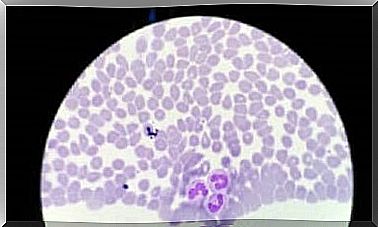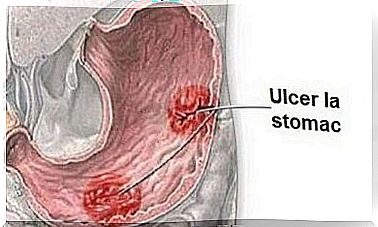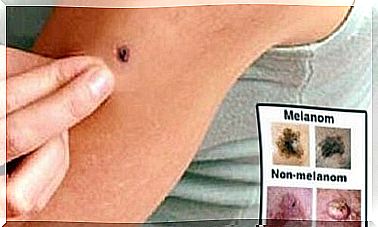What Does Green Phlegm Cough Mean?

Why does green phlegm cough occur? Is it always an infection that should be treated with antibiotics?
This body fluid is secreted by the mucous membrane of the airways in mammals and, according to bibliographic sources, has the role of maintaining airway hydration. Phlegm also captures and facilitates the expulsion of foreign agents from the body. Because it also contains lysozyme (antibacterial substances) and antibodies, we can say that phlegm has antimicrobial properties.
Strange as it may seem, the color of the phlegm can reveal the nature of the patient’s illness. In this article, we will tell you what it means and especially why phlegm can get a greenish color. We will also explain what you should do.
The different colors of phlegm
As we have seen, the color of phlegm shows what the immune system is trying to eliminate from the body. A cough accompanied by brown phlegm may mean that, for example, the patient has inhaled soil or mineral compounds for a long time. It could also indicate that there is dry blood in a certain part of the airway.
The color red can indicate a serious illness in some cases. It may show that there is bleeding in certain areas of the body that are in contact with the nasal cavity and mouth.
In the next section, we will focus on the topic of this article: What does green phlegm cough mean?
Here is the answer.

What does green phlegm cough mean?
As already mentioned, the presence of green phlegm cough indicates that the body is fighting an infection. Paradoxically, this greenish coloration occurs due to the large number of dead leukocytes and other substances derived from the fight against viruses or bacteria.
The most common infections that give rise to this sputum are the following.
According to research, acute bronchitis is the most common diagnosis in people with green phlegm cough. In this case, we are dealing with an infection of viral origin, because rhinoviruses (which cause the common cold) are the cause of 90% of diseases.
Although it is not so common, we should also mention that bronchitis can also be caused by bacteria. According to the source quoted above, 32% of patients with cough that lasts more than two weeks are infected with the bacterium Bordetella pertussis.
The main symptoms are:
In this case, we face a much more aggressive and serious disease than the previous one, because it is associated with a certain risk of mortality (up to 1.33 per million inhabitants, according to studies). The Cystic Fibrosis Foundation (CFF) reports that this disease is hereditary and is characterized by dysfunction of the exocrine glands.
Under normal circumstances, the glands produce mucus, saliva and other fluids that help the body function normally. In patients with cystic fibrosis, this mucus is too thick, clogging the lungs and intestines. Persistent greenish phlegm cough shows that the body is trying to get rid of this thick and dysfunctional mucus.
Other important facts about this disease are:
According to the World Health Organization (WHO), pneumonia is responsible for 15% of deaths in children under 5 years of age. It is a disease caused by a viral, bacterial or fungal infection. Again, green phlegm cough is evidence of the immune fight against these microorganisms.
Some of the microorganisms that cause it are the bacteria Streptococcus pneumoniae, the Haemophilus influenzae virus type b, the pathogenic fungus Pneumocystis Jiroveci and the respiratory syncytial virus. Pneumonia causes the patient’s lung alveoli to fill with fluid and pus. This makes breathing painful and limits the absorption of oxygen.
Cough with green phlegm is typical of sinusitis of bacterial origin. According to statistical studies conducted in the United States, this disease affects about 31 million patients each year.
In this case, the pathogenic bacteria settle in the sinuses, causing nasal congestion , expulsion of phlegm and pain or pressure in the areas around the nose and eyes.

How do you cope with a green phlegm cough?
As we have seen, green phlegm with cough may indicate an immune response to an infection or hereditary disease, such as cystic fibrosis. Many natural remedies can help relieve throat irritation, but depending on the severity of the condition, medical treatment may be needed.
In many cases, airway therapies are not essential because the conditions go away on their own. This means that the patient’s immune system can cope with the pathogenic invasion on its own. The body will get rid of the symptoms in about a week.
In other cases, it may be necessary to use antibiotics, inhalers to open the narrow airways of the lungs and even surgery. The decision will be made by the specialist in charge of treating the patient. That’s why it’s important to go to the doctor.









